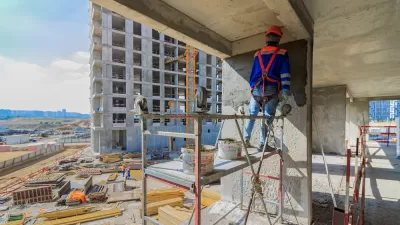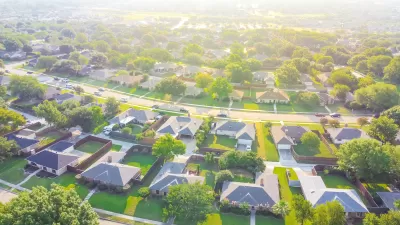Nashville and surrounding communities allow for a relatively small amount of multi-family housing, according to a new zoning atlas of Middle Tennessee. A regionally focused nonprofit is using the atlas to push for zoning reforms.
The lack of property zoned for multi-family housing in Davidson County exacerbates Nashville's affordability crisis, according to a new study by the Beacon Center.
According to an article by Nate Rau for Axios Nashville, researchers from the Beacon Center scrutinized zoning codes throughout Middle Tennessee, producing a zoning atlas to map findings such as:
- Just 10.9% of zoned land in Davidson County allows three or more units.
- Davidson County allows two units on 57.2% of zoned land.
- Suburban counties allow even less deviation from the single-family zoning norm: Williamson County, for example, allows three or more units on only 4.5% of its zoned land.
The Tennessee Zoning Atlas, based on the methodology of the National Zoning Atlas, includes overlays illustrating land where accessory dwelling units are allowed, in addition to planned residential developments, and lot sizes—the latter ranging from 0 to 20.24 acres to 2-plus acres.
The Beacon Center uses a separate webpage, along with the video shown above, to make the case that restrictive zoning contributes to high housing costs—a contentious point in the ongoing debates about gentrification, affordable housing, and cost of living that dominate the focus of the contemporary planning discussion. The supply-side findings of the Beacon Center’s study would obviously further the YIMBY, or pro-development, cause. According to the Beacon Center, “few Tennesseans realize that the biggest factor limiting where and how many homes can be built, leading to higher housing costs, is zoning by local governments.”
“These zoning restrictions not only impact individual families looking for affordable places to live but inflict massive costs on society. Studies show how restrictive zoning requirements have forced cities to continue developing further into the countryside—creating longer commutes, increased traffic, lowered productivity, and job relocations not based on opportunities, but on housing costs,” according to the post [links to studies were chosen by the author of this post] .
FULL STORY: Nashville zoning limits multi-family developments, report finds

Trump Administration Could Effectively End Housing Voucher Program
Federal officials are eyeing major cuts to the Section 8 program that helps millions of low-income households pay rent.

Planetizen Federal Action Tracker
A weekly monitor of how Trump’s orders and actions are impacting planners and planning in America.

The 120 Year Old Tiny Home Villages That Sheltered San Francisco’s Earthquake Refugees
More than a century ago, San Francisco mobilized to house thousands of residents displaced by the 1906 earthquake. Could their strategy offer a model for the present?

HSR Reaches Key Settlement in Northern California City
The state’s high-speed rail authority reached an agreement with Millbrae, a key city on the train’s proposed route to San Francisco.

Washington State Legislature Passes Parking Reform Bill
A bill that would limit parking requirements for new developments is headed to the governor’s desk.

Missouri Law Would Ban Protections for Housing Voucher Users
A state law seeks to overturn source-of-income discrimination bans passed by several Missouri cities.
Urban Design for Planners 1: Software Tools
This six-course series explores essential urban design concepts using open source software and equips planners with the tools they need to participate fully in the urban design process.
Planning for Universal Design
Learn the tools for implementing Universal Design in planning regulations.
Ada County Highway District
Clanton & Associates, Inc.
Jessamine County Fiscal Court
Institute for Housing and Urban Development Studies (IHS)
City of Grandview
Harvard GSD Executive Education
Toledo-Lucas County Plan Commissions
Salt Lake City
NYU Wagner Graduate School of Public Service





























